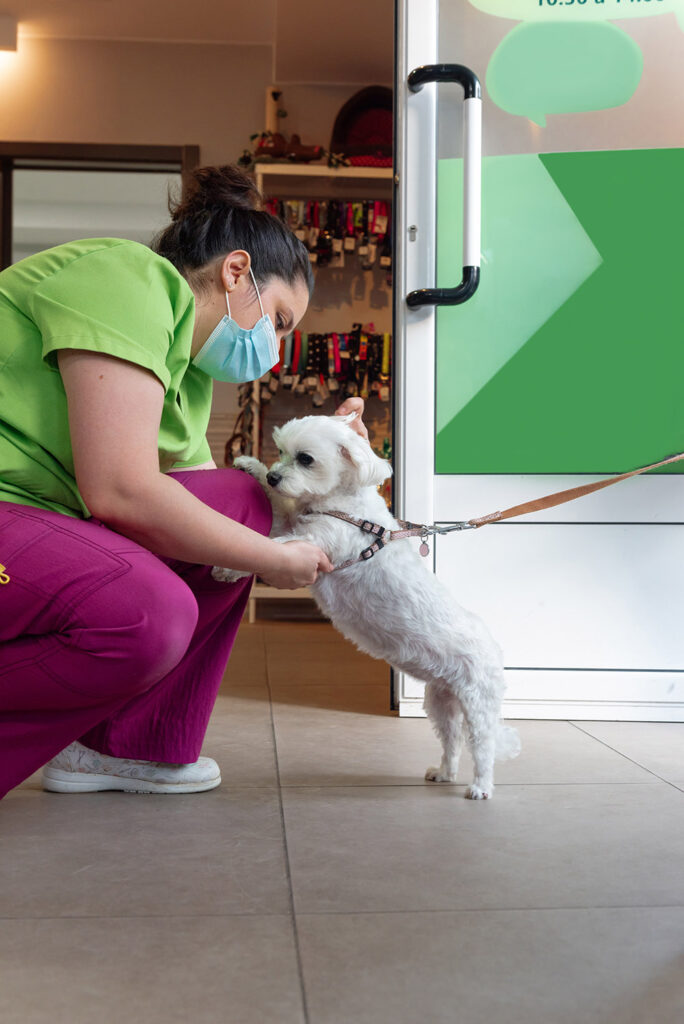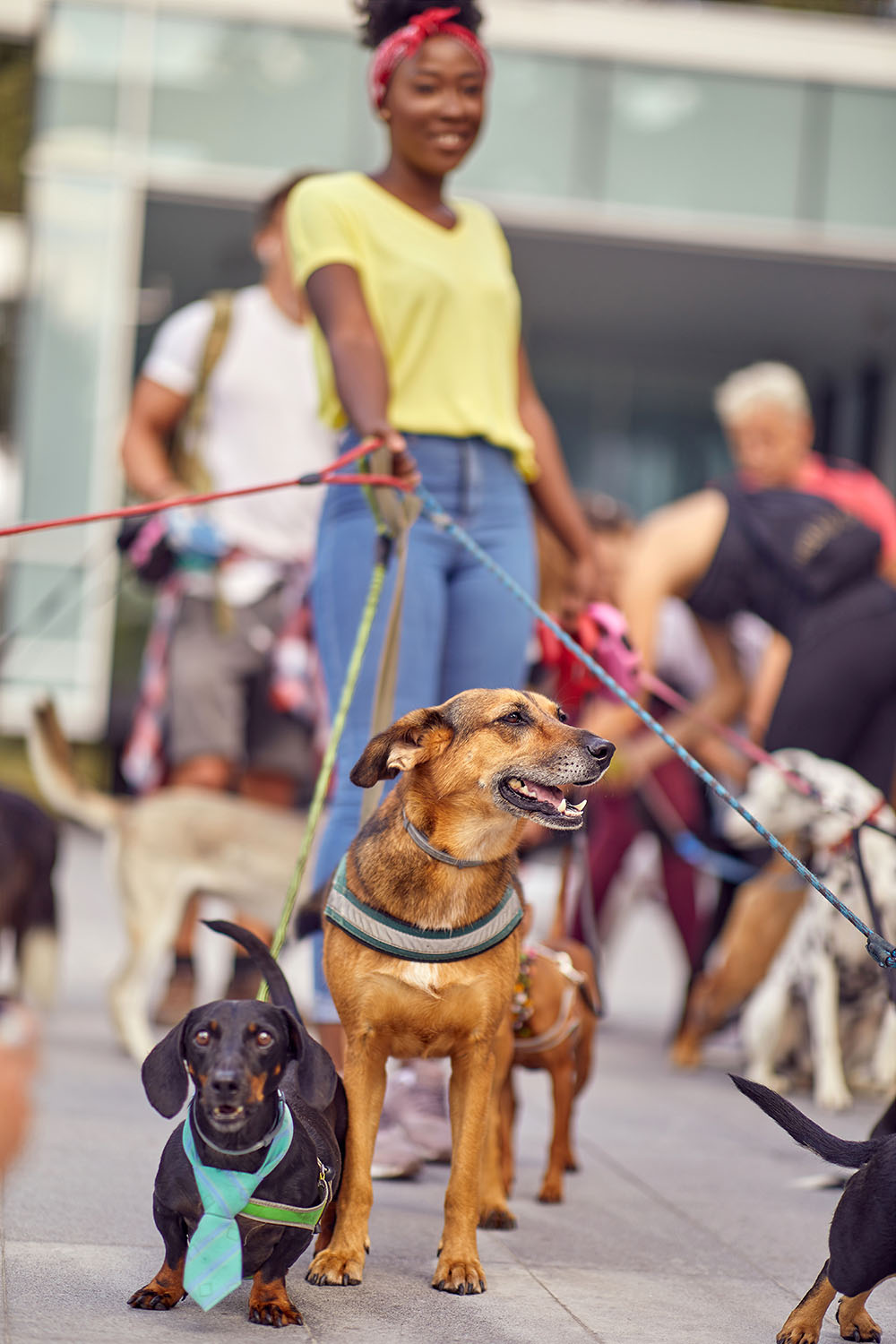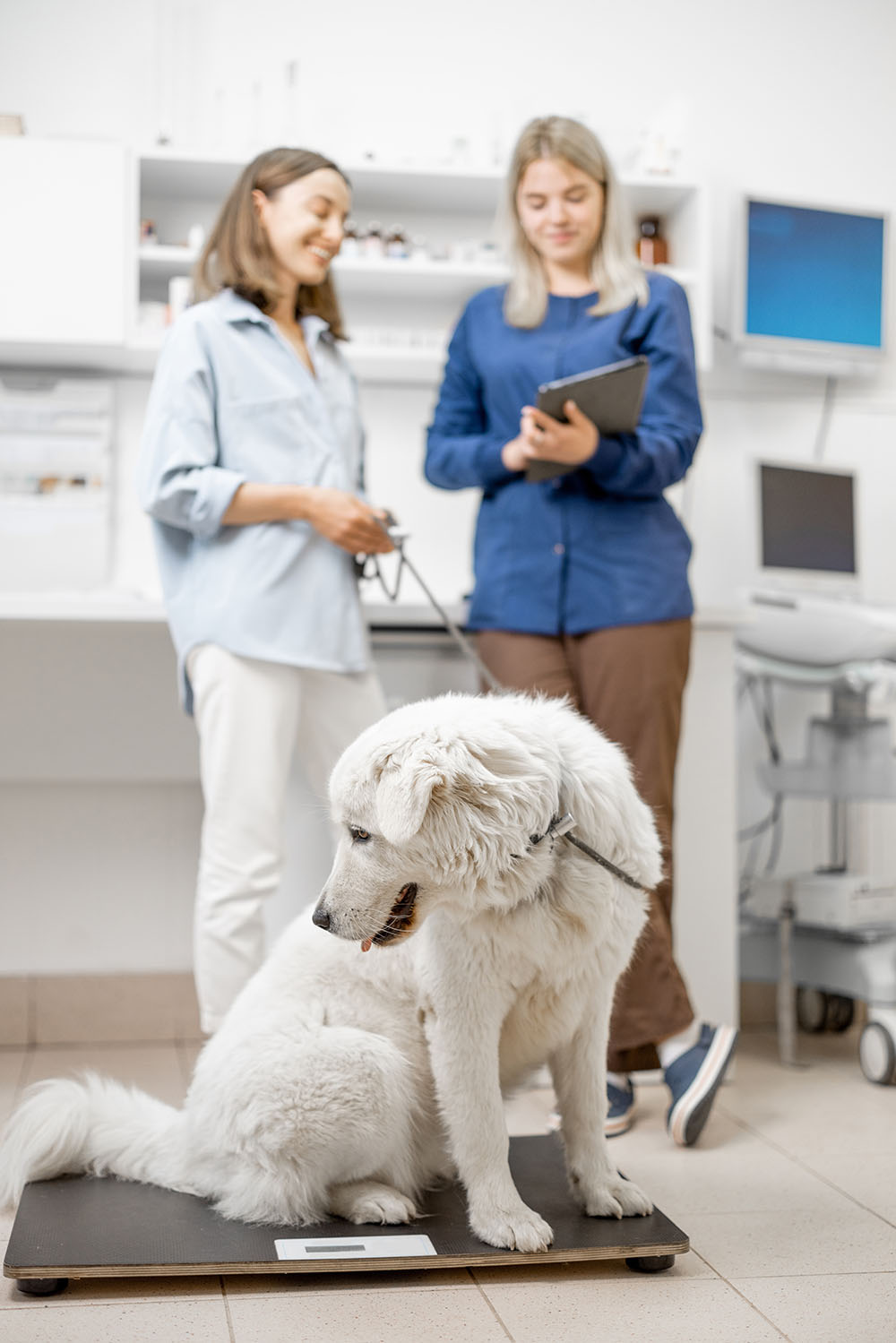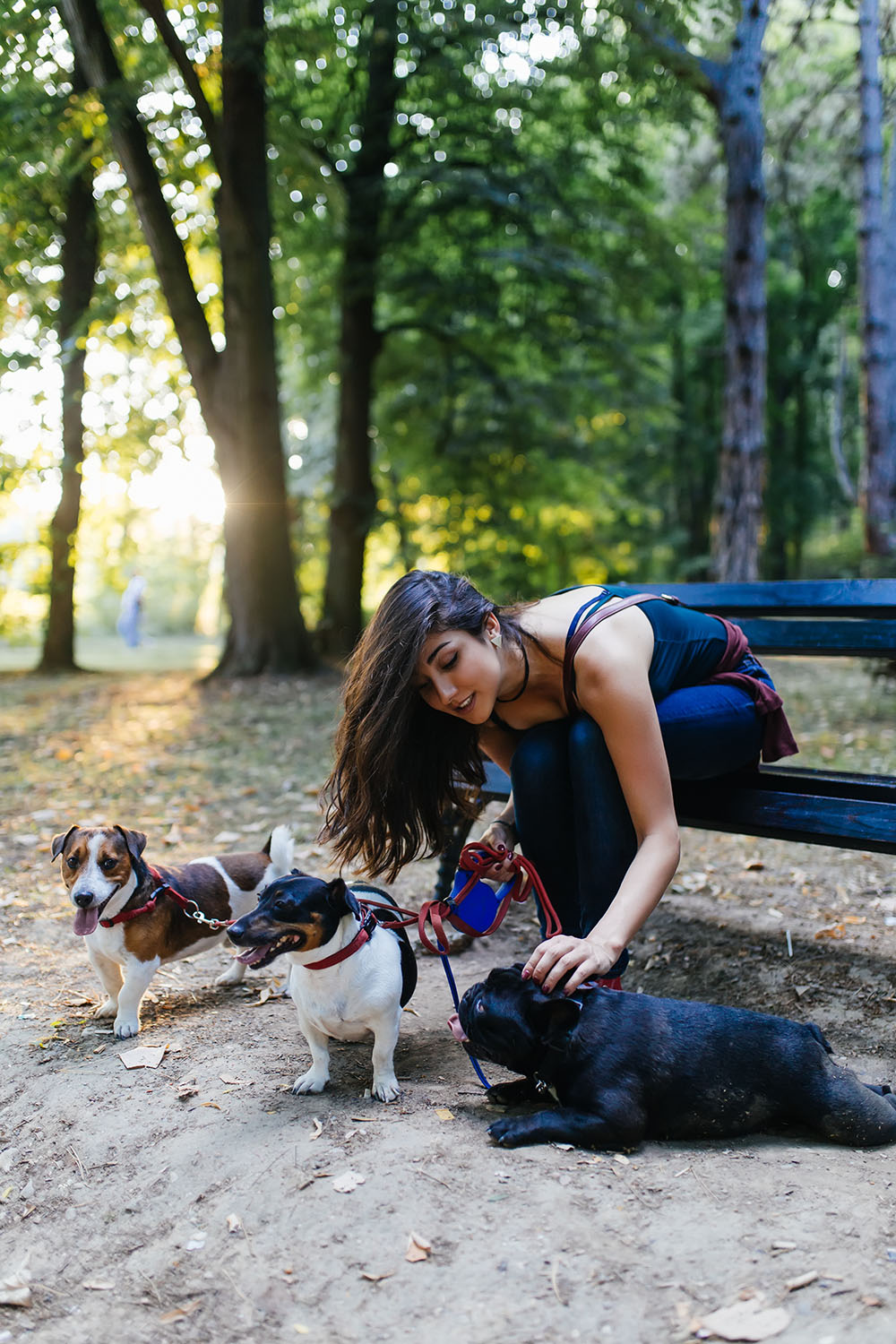Daily exercise is wonderful, helping our pups restore good health and bond with the master. But how many times a day should I walk my dog? If you don’t have the answer just yet, do not worry! This post will provide you with anything you need to care for your trusty furry friend.

How Often & How Long To Walk Your Dog?
According to PetMD, the majority of dogs can handle a daily stroll of 20 to 30 minutes if their bodies are in a good state. Still, the exact amount and frequency depend heavily on the specific breed, their health condition, and age.
Most of the time, age has the most impact on the leash walking frequency. Here are the suggested rates according to the American Kennel Club.
- Puppies: Puppies require frequent trips outside to relieve themselves since they are less resilient than adult dogs and require a pee break every two to four hours. As they might get tired quickly due to their short legs and tiny bodies, we say 5- to 7-minute regular walks are enough.
- Mature dogs: If your canine has no underlying health issues, you can walk them twice daily for about 10-15 minutes. You can even give them a stroll for 30 minutes to up to 1 hour for stronger and more energetic furries.
- Senior canines: Suppose your old pal loves regular walking; then a 10- to 15-minute outdoor activity will be super beneficial since it is good for maintaining physical and mental health. Going outdoors once or twice a day is recommended, depending on the animal’s condition. Still, notice that the pace might be slower, so be patient.
Factors Influence Dog Walking Rates
Breed

Exercise requirements vary throughout breeds. Types intended for lap dogs, like Papillons and Yorkshire Terriers, may require less exercise than sporting or working types, such as Australian Shepherds or Collies.
That being said, breed is not the only factor. The dog’s personality counts, too. For example, certain Basset Hounds may be born athletes, while others would much rather lounge on the couch. Additionally, dogs who are more likely to be destructive, anxious when left alone, or stressed out could benefit from increasing their exercise regimen.
Health Condition

Over their lifetime, your dog’s physical activity tolerance will change. Once it does, it is advisable to get a veterinarian to assist you in designing an exercise regimen that will keep the furries as physically active as possible.
In addition, suppose your dog has an underlying physical health issue, such as asthma, arthritis, obesity, etc. These problems also affect its walking routine. The pup will need more breaks and less walking compared to a healthy furry.
Age
Age influences how high or low a dog’s walking needs. Younger pups have greater energy and often require more physical exercise than middle-aged and old pals (5-9 years old). However, as usual, there are exceptions to the norm.
Remember that elderly and middle-aged dogs may have low-energy conditions like hypothyroidism or diabetes, or they may have arthritis or muscle atrophy. They might be eager to leave mentally, but physically, they often fall behind.
Living Situation
Not many pet owners know this, but after years of working with countless customers’ dogs, we’ve learned that how big your living area is compared to the dog’s size will determine how much exercise session it needs.
Suppose you have a large backyard; a tiny dog can frequently find ample space to run around, so short daily dog walks or some playtime are needed.
The same case doesn’t apply to larger breeds with a smaller living place. To maintain their health and prevent them from becoming agitated or hyperactive, you have to provide them with more walks throughout the day. This way, they can get their legs to move more and release more energy.
Tips To Have Quality Walking Time With Your Pup

Have Some Training First
Investing time to get your dog some basic training will benefit you in the long run. You can practice fundamental obedience with your dogs by walking and teaching them commands like heel, stay, and sit down. This way, you will assist your dog become more focused and have better impulse control.
Change The Route Frequently
According to our own experience with numerous canines, regular dog walks can be made more enjoyable by occasionally changing up the route. Later, we found out that even dog trainers and professional walkers agreed with us.
Introducing the pups to a new neighborhood will assist in spicing up the daily stroll. This will enhance your daily outings and allow the animals to learn new things.
Have Some Treats With You
Every dog loves treats. Just thinking about the tasty treats will make your furry friend drool. Thus, these foods are a great way to add extra enjoyment to your walks with your dog.
You can engage your pet in short games, like throwing some goodies onto the ground and rewarding them for finding them. This will stimulate their minds and improve their sniffing skills.
Create A Daily Routine
We recommend you create and maintain a schedule as soon as possible, as this helps your dog acclimate to walking with you. They will learn acceptable behavior from this, making them behave better when you take them to new walking locations.
When dogs know where they are headed, they can remain calm, minimizing the chance of them getting freaked out.
Understand The Dog’s Needs
Dogs from different breeds require different amounts of exercise. Thus, do your research on the type of exercise and how long walks your companion dog needs. Some certain breeds and mixes will thrive on a couple of short walks each day, while others require a longer run to release their excess energy.
For instance, one of our clients’ French Bulldogs was satisfied with three short times per day. A Border Collie of another customer, on the other hand, had to get a 30-minute to 1-hour-long walk, or else she would mess with our dog walkers for the rest of the day.
Get Proper Gear
Everyone knows that a leash is essential. Still, aside from that, there are three things you should never go anywhere without. First, poop bags. Never fail to tidy up after your furry friend. It’s not just polite behavior; failing to comply could result in a sizable fine. Additionally, you should have a bottle of water with you. Even in cool weather conditions, your dog may become severely dehydrated very fast. Ultimately, if you can give them a toy, they will be thrilled to run around and have fun.
Frequently Asked Questions
Should You Let Your Dog Sniff While Walking?
Yes. The pup will love walks even more if you allow it to use its sense of smell to investigate the surroundings. They will eventually get wearier and at ease due to increased mental stimulation. This is also great for maintaining their sharp noses and smelling ability.
Can You Overwalk A Dog?
Not recommended. Overwalking is a big problem caused by the owner not knowing how to structure a suitable workout for the dog. It can lead to them becoming resistant to impact exercise, developing mobility problems, anxiety, and fatigue/lethargy. So, be moderate with your daily walks.
Do Dogs Need Rest Day?
Definitely, a relaxation day involving no walks and no contact with the outside world is an underrated need that many pet owners miss. It is essential to let the canines unwind and enjoy peaceful activities at home because it greatly impacts their behavior and results in a generally calmer, more relaxed dog.
The Bottom Line
Now, you have the right dog walking rates and length. Overall, the duration and frequency of the walking depend mainly on the dog itself. So, pay attention to your dog’s needs and adjust the duration of the walks accordingly.






